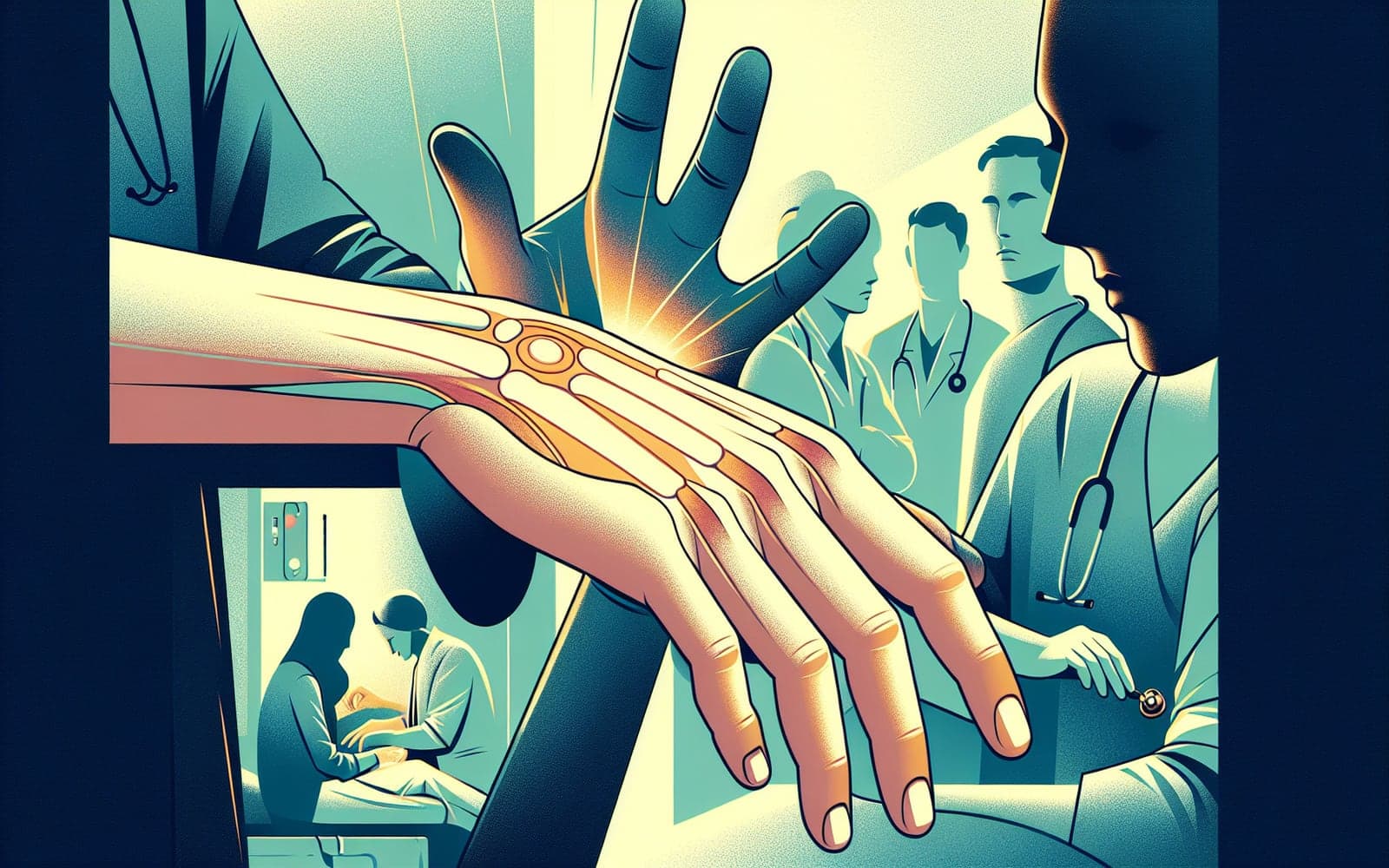Contents
-
High-Impact Activities and Sports
-
Occupational Hazards
-
Anatomical Factors
-
Age and Gender Considerations
Wrist at Risk: Who's Most Likely to Suffer a Lunate Injury?
Wrist at Risk: Who's Most Likely to Suffer a Lunate Injury?
Are You in the Danger Zone?
Certain factors can increase your risk of sustaining a lunate or perilunate injury. Understanding these risk factors can help you take steps to protect your wrists.
Contents
-
High-Impact Activities and Sports
-
Occupational Hazards
-
Anatomical Factors
-
Age and Gender Considerations
High-Impact Activities and Sports
Participants in sports like skateboarding, snowboarding, and gymnastics are at higher risk for lunate and perilunate injuries. These activities often involve falls onto outstretched hands. It's like repeatedly stress-testing your wrist - eventually, something might give.
Occupational Hazards
Certain jobs that involve repetitive wrist motions or the risk of falls can increase injury risk. This includes construction workers, factory workers, and even office workers who type extensively. Your wrist is like a machine part - constant use or sudden impacts can lead to wear and tear.
Anatomical Factors
Some people have anatomical variations that increase their risk. For example, having a shorter ulna bone relative to the radius (called ulnar negative variance) can put more stress on the lunate. It's like having slightly mismatched parts in a machine - it can lead to uneven wear over time.
Age and Gender Considerations
While these injuries can occur at any age, they're more common in young to middle-aged adults. Men are more frequently affected, possibly due to higher participation in high-risk activities. Think of it as a combination of peak physical activity and potentially risky behavior.
FAQs
Are lunate injuries more common in certain sports?
Yes, particularly in sports with falls onto outstretched hands.
Can repetitive stress cause lunate injuries?
Yes, repetitive wrist motions can increase risk over time.
Does having small wrists increase injury risk?
Not necessarily, but certain bone alignments can increase risk.
Can wrist guards prevent these injuries?
They can help reduce risk in some activities.
Are lunate injuries genetic?
While not directly genetic, some risk factors can be inherited.
Knowledge is Power
Understanding your personal risk factors for lunate and perilunate injuries can help you take appropriate precautions and seek prompt treatment if an injury occurs.
Additional References
-
Geissler WB. Carpal fractures in athletes. Clin Sports Med 2001; 20:167.
-
van Onselen EB, Karim RB, Hage JJ, Ritt MJ. Prevalence and distribution of hand fractures. J Hand Surg Br 2003; 28:491.
-
Herzberg G, Comtet JJ, Linscheid RL, et al. Perilunate dislocations and fracture-dislocations: a multicenter study. J Hand Surg Am 1993; 18:768.
-
Çolak I, Bekler HI, Bulut G, et al. Lack of experience is a significant factor in the missed diagnosis of perilunate fracture dislocation or isolated dislocation. Acta Orthop Traumatol Turc 2018; 52:32.
-
Sawardeker PJ, Baratz ME. Carpal injuries. In: DeLee & Drez's Orthopaedic Sports Medicine: Principles and Practice, 4th ed, Miller MD, Thompson SR (Eds), Saunders Elsevier, Philadelphia 2015.
This article has been reviewed for accuracy by one of the licensed medical doctors working for Doctronic.












